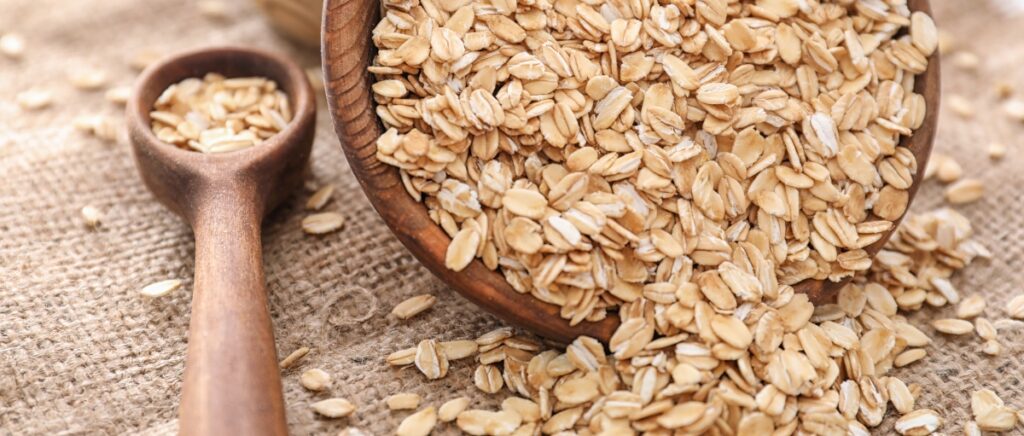Have you ever craved overnight oats and found a forgotten box of oatmeal in your pantry and wondered if it was still safe to eat? As a staple in many households, oatmeal is known for its long shelf life, but does that mean it lasts forever?
According to a recent study, an alarming 84% of Americans have admitted to only occasionally throwing out food close to its expiration date. While some foods can be consumed past their expiration date without consequence, others can pose serious health risks. When it comes to oatmeal, the answer lies somewhere in between.
The shelf life of oatmeal varies depending on the type and packaging, with instant oatmeal and store oats lasting up to 1-2 years, while steel-cut oats remain fresh for years when stored properly. However, consuming expired oatmeal can lead to unpleasant taste, loss of nutritional value, and in some cases, exposure to harmful mold and bacteria.
In this article, we’ll explore the factors affecting oatmeal’s shelf life, the signs of spoilage to watch out for, and the best storage techniques to keep oatmeal fresh for as long as possible.
Can Oatmeal Go Bad? Practical Tips for Consuming and Storing Oatmeal Safely
When it comes to consuming expired oats, it’s essential to exercise caution and good judgment. Before preparing a bowl of oatmeal from a package that has passed its expiration date, take a moment to assess its condition using your senses.
First, visually inspect the oatmeal for any signs of mold, discoloration, or clumping. If you notice any of these red flags, it’s best to discard the oatmeal, as consuming it could potentially lead to health issues. Next, give the oatmeal a sniff test. If it has developed an off-odor or smells rancid, this is another clear indication that it has gone bad and should not be eaten.
Ultimately, proper storage is key to maximizing the shelf life of your oatmeal. Always keep your oatmeal in a cool, dry place, such as a pantry or cupboard, away from direct sunlight and heat sources. Exposure to moisture and extreme temperatures can accelerate the spoilage process and compromise the quality of your oatmeal.
Consider transferring your oatmeal from its original packaging to an airtight container, such as a glass jar or a resealable plastic bag. This extra step helps protect the oatmeal from moisture, air, and potential contaminants, keeping it fresh for longer.
By following these simple guidelines and trusting your senses, you can safely enjoy your oatmeal while minimizing the risk of consuming spoiled or expired products. Remember, when it comes to food safety, it’s always better to err on the side of caution.
How Long Is Oatmeal Good For? Oatmeal’s Shelf Life and Spoilage
Several factors can influence the shelf life of oatmeal. Rolled oats, for example, have a longer shelf life compared to instant oatmeal due to their thicker texture and slower cooking time. Steel-cut oats, which undergo minimal processing, can last even longer when stored properly.
Storage conditions, such as temperature, humidity, and light exposure, can also impact oatmeal’s shelf life. Oatmeal stored in a cool, dry environment away from direct sunlight and heat sources will remain fresh for longer than oatmeal exposed to warm, humid, or bright conditions.
When oatmeal spoils, it exhibits distinct signs that indicate it is no longer safe to consume. These signs include:
- Visual cues: Mold growth, discoloration, or the presence of insects or larvae
- Olfactory cues: Off-odors, such as a sour, musty, or rancid smell
- Textural changes: Clumping, hardening, or the presence of excessive moisture
Consuming spoiled oatmeal can pose potential health risks, such as exposure to harmful mold and mycotoxins, which can cause digestive issues, allergic reactions, or other illnesses. Rancidity and oxidation of the fats in oatmeal can also lead to unpleasant taste and reduced nutritional value.
Expert-Approved Storage Techniques for Maximum Freshness
Experts recommend storing oatmeal in a cool, dry place with a stable temperature, such as a pantry or cupboard. Avoid storing oatmeal near heat sources, such as ovens or appliances that generate heat, and keep it away from direct sunlight, as light can accelerate the oxidation process.
Airtight containers made of glass, ceramic, or stainless steel are ideal for long-term oatmeal storage. These containers prevent moisture, air, and contaminants from entering, helping to maintain the oatmeal’s freshness and quality. Resealable plastic bags can also be used, but be sure to remove as much air as possible before sealing.
To further extend the shelf life of your oatmeal, consider storing it in smaller quantities. This approach allows you to use up older oatmeal first, ensuring that you consume it before it has a chance to spoil. Applying the “first in, first out” (FIFO) method can help you keep track of your oatmeal’s freshness and minimize waste.
Some people refrigerate or freeze their oatmeal for long-term storage. While this can extend the shelf life, it’s essential to use airtight, moisture-proof containers to prevent condensation and freezer burn. When you’re ready to use refrigerated or frozen oatmeal, allow it to come to room temperature before opening the container to avoid moisture buildup.
Maximizing Oatmeal’s Longevity: Advanced Storage Methods
In addition to basic storage techniques, there are several advanced methods that can help extend oatmeal’s shelf life even further. One such method is vacuum sealing, which involves removing air from the storage container or bag before sealing it. By eliminating oxygen, vacuum sealing can significantly slow down the oxidation process and prevent moisture and contaminants from entering, thereby prolonging the oatmeal’s freshness.
Another method to consider is dehydration. By removing moisture from the oatmeal, you can create a shelf-stable product lasting several years. To dehydrate oatmeal, spread it in a thin layer on a baking sheet and place it in a dehydrator or a low-temperature oven until it reaches a crisp, dry texture. Once dehydrated, store the oatmeal in an airtight container in a cool, dry place. When you’re ready to use it, simply rehydrate the oatmeal by adding water or milk and cooking it as usual.
While these advanced storage methods can be effective in extending oatmeal’s shelf life, they may not be necessary for everyone. If you consume oatmeal regularly and rotate your stock frequently, following the basic storage guidelines and trusting your senses to detect signs of spoilage should be sufficient to ensure you’re always eating fresh, safe oatmeal.
So, Do Oats Go Bad? The Bottom Line
Understanding oatmeal expiration and proper storage techniques is essential for ensuring that your breakfast remains safe, nutritious, and delicious. By learning to recognize the signs of spoilage, such as mold, off-odors, and textural changes, you can confidently decide whether your oatmeal is still fit for consumption.
Proper storage, including the use of airtight containers and the maintenance of a cool, dry environment, can significantly extend the shelf life of your oatmeal. For those looking to maximize oatmeal’s longevity, advanced storage methods like vacuum sealing and dehydration offer additional options.
Ultimately, the key to oatmeal safety and freshness lies in a combination of knowledge, vigilance, and good judgment. By staying informed, routinely checking your oatmeal’s condition, and prioritizing food safety, you can enjoy the many benefits of this wholesome, versatile grain without compromising your health or well-being.
Sources
CHLPI on Expiration Dates: Harvard Law School Center for Health Law and Policy Innovation. (2019, December 12). Expiration dates are meaningless. CHLPI. https://chlpi.org/news-and-events/news-and-commentary/food-law-and-policy/expiration-dates-are-meaningless/
Simply Recipes on Storing Oats: Walkowicz, L. (2023, August 10). How to store oats. Simply Recipes. https://www.simplyrecipes.com/how-to-store-oats-7480457
NCBI PMC Article on Whole Grains: Seal, C. J., Brownlee, I. A., & Juvonen, K. R. (2017). Whole grains and health: Evidence supporting their role in reducing chronic disease risk. Proceedings of the Nutrition Society, 75(4), 429-436. https://doi.org/10.1017/S0029665116002895
Eat Proper Good on Oatmeal Shelf Life: Proper Good. (2022, July 11). How long does oatmeal last? Eat Proper Good. https://eatpropergood.com/blogs/a-proper-good-blog/how-long-does-oatmeal-last
Kitchen Stewardship on Soaking and Dehydrating Oats: Kitchen Stewardship. (2020, April 6). How to soak and dehydrate oats. Kitchen Stewardship. https://www.kitchenstewardship.com/how-to-soak-and-dehydrate-oats/











